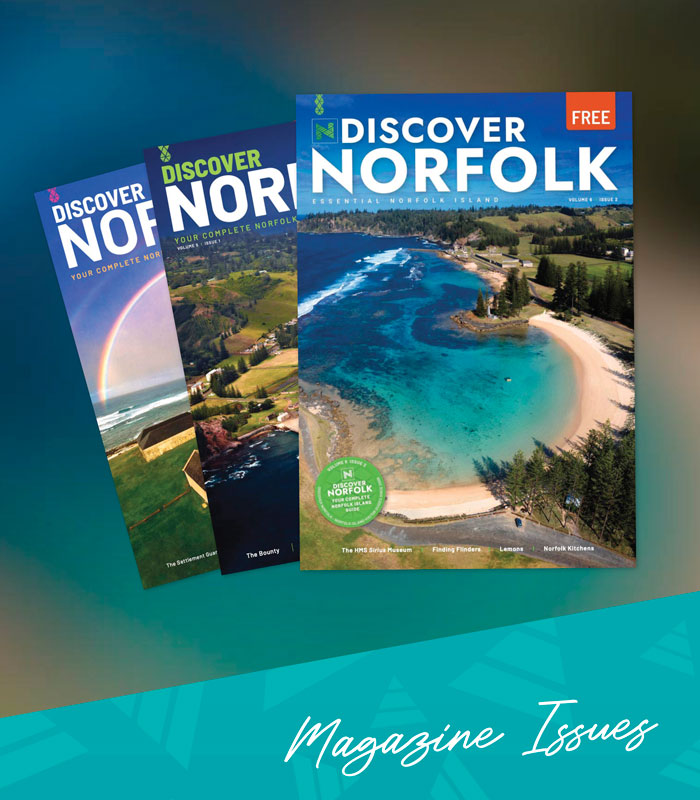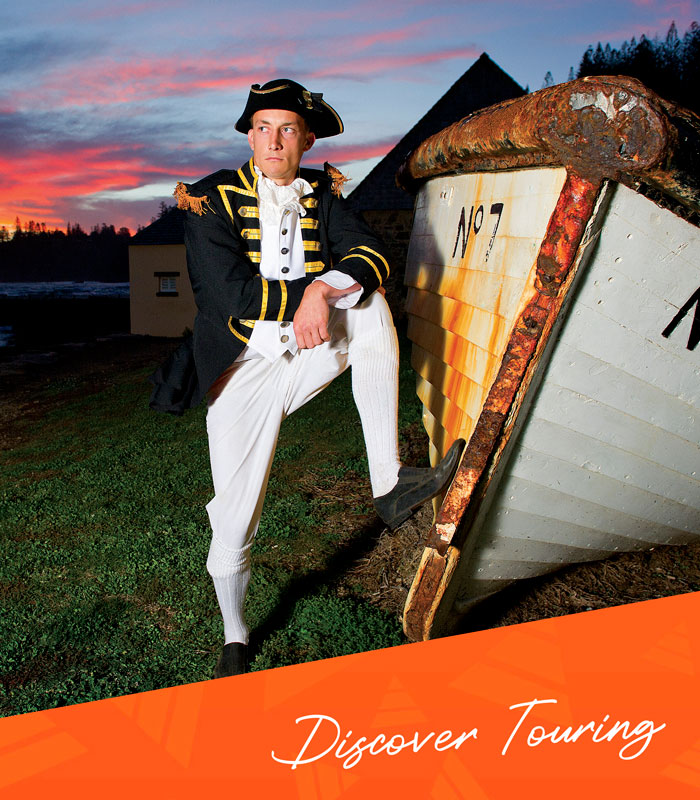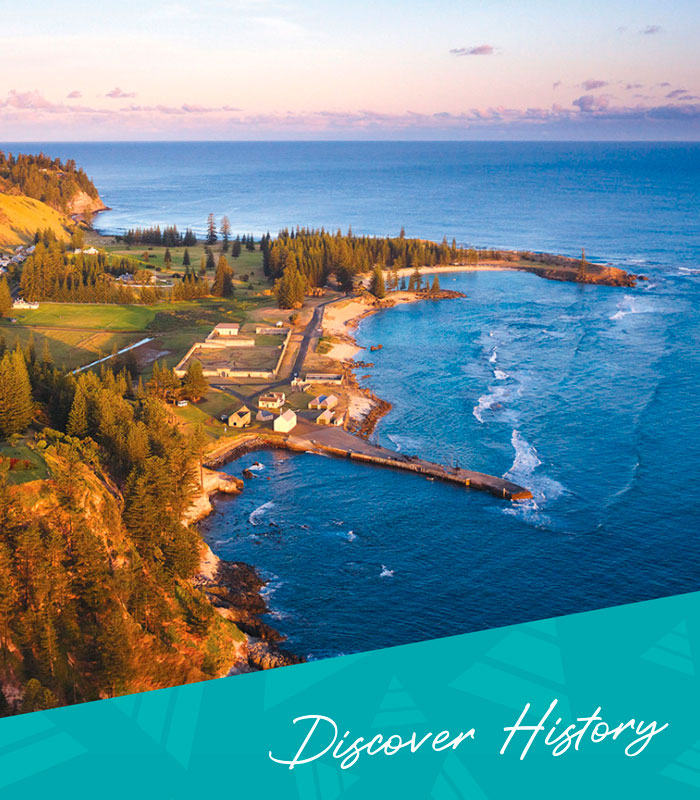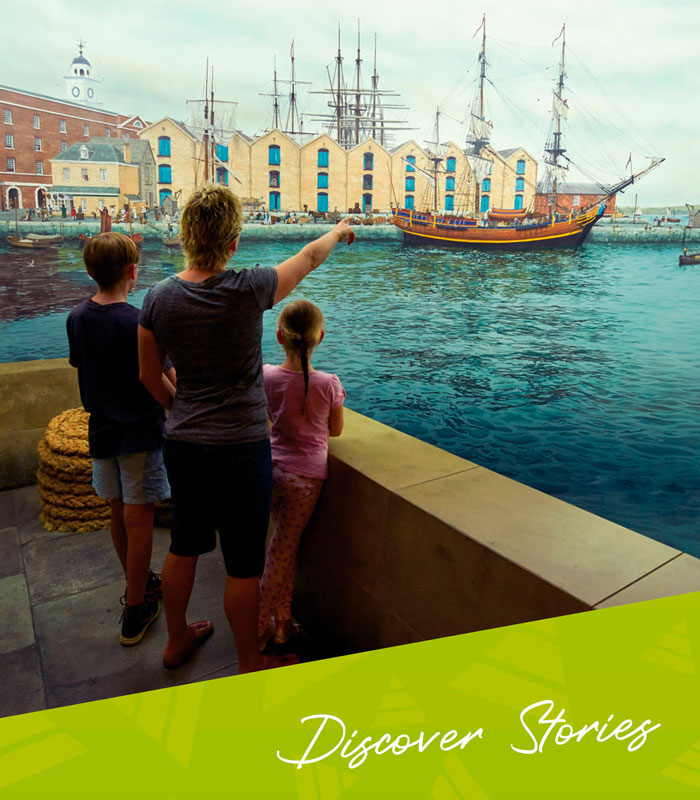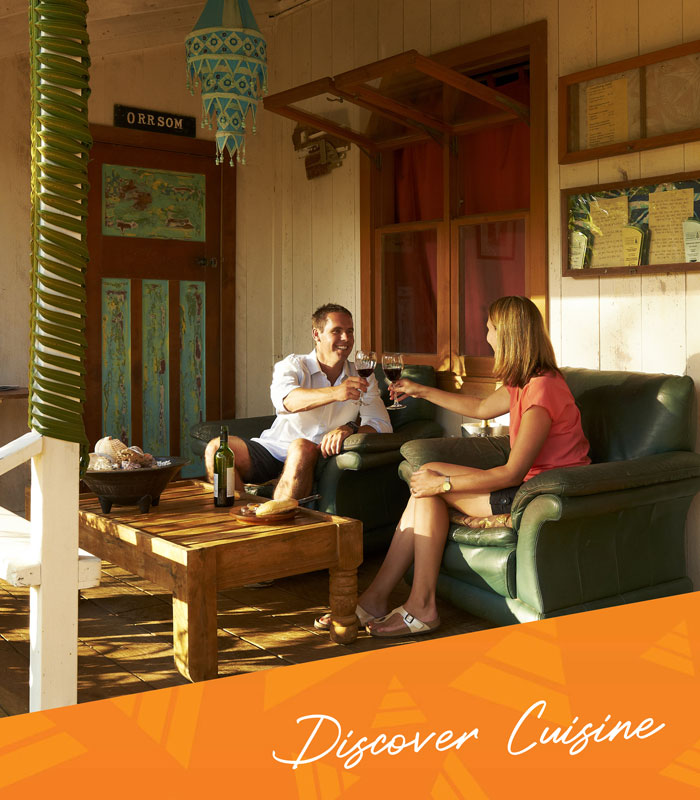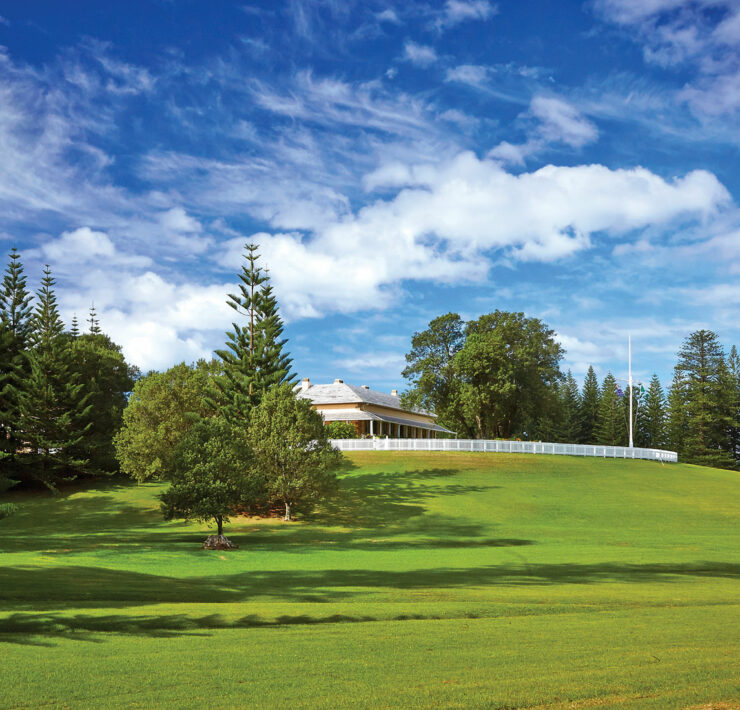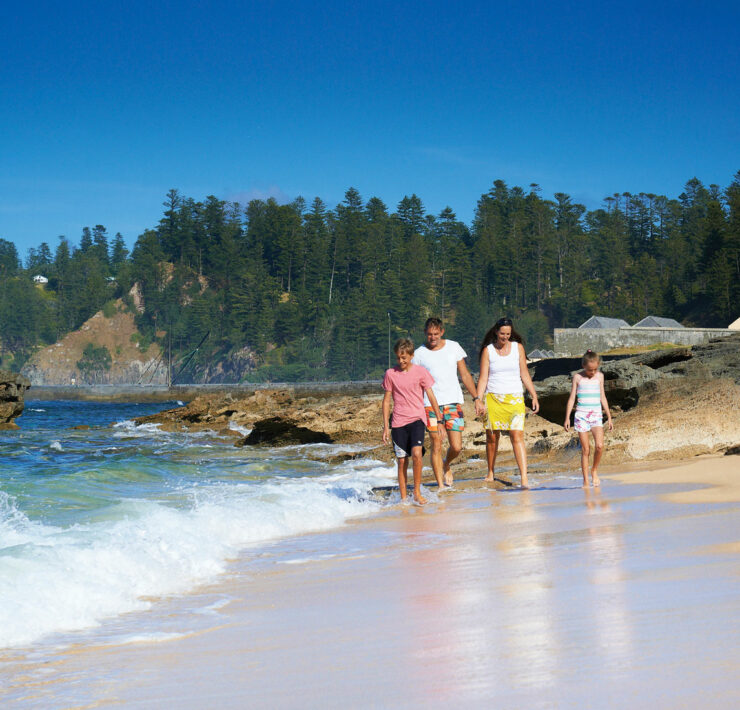Home » All Articles » The Buzz of the Saw: Utilising Norfolk Island’s unique icon
The Buzz of the Saw: Utilising Norfolk Island’s unique icon

When Cook first visited Norfolk Island, his voyage biographer noted:
“The chief produce of the island is a kind of spruce pine, exceedingly straight and tall, which grows in great abundance. Such is the size of many of the trees that, breast high, they are as thick as two men can fathom.”
It is well known that when settling this part of the world, the British Navy had hoped that Norfolk’s pines would supply mainmasts for the fleet as an alternative to those that had been obtained from New England prior to the American War of Independence. In fact, the pines proved unsuitable for this purpose. However, the earliest settlers still looked on the trees as a valuable resource.
In his diary, Lieutenant Governor King wrote:
“The pine trees are of a great size… from the root to the lower branches there is eighty to ninety feet of sound timber… The timber of the pine is very useful (sic) in buildings …From what I have seen of this wood, it is very durable. Two boats have been built of it, and have answered the purpose fully.”
One of the first priorities in the new Norfolk colony was the creation of shelters and other infrastructure, and the plentiful pine trees provided the essential raw material. In addition, the settlement was able to export large quantities of Norfolk pine to the settlement in Sydney, even though they had only basic tools available for felling the trees and sawing the timber.
For many generations, right up to the first part of the last century, pit-sawing was the main method of processing timber. This was a pit dug in the ground into which a log would be positioned and manually milled. There are still many hollows of those former saw pits on the island, the most notable being the one behind the changing sheds at Slaughter Bay. This area was always known as “The Lumber Yard”, and the high convict-built walls surrounding the area were still in place until about 50 years ago. The Pitcairners made very good use of the Norfolk pine for their homes and boats, and became very skilled in handling it. Older Norfolk Islanders can recall times when there were as many as five timber mills on the island. Some of the early power mills were steam driven. One old steam engine still stands from the road near Selwyn Bridge on the way to Anson Bay. At Cockpit in the Cascades area, you can still see the remnants of a cement chute that was used to direct water on to a water wheel, providing power for a mill located there.
Saw-pits were not phased-out on Norfolk until after the World War II, when improved transportation made it less important to process timber close to the source of supply. One mill operating in the mid-1900s was that of Young Evans, on New Cascade Road. His grandson, Arthur, tells how, during the War, one of the officers from the New Zealand Army came to Young and requisitioned one piece of timber which was 60 feet (18 m) long. Even today, no mechanised mill on the island can produce a piece much longer than 20 feet (6m). Young went to great pains to produce this length of timber, right down to selecting the perfect tree. When it was finally ready, the officer came to inspect it, decided it would be too difficult to transport, and promptly asked that it be sawn in half!
Christian’s Mill, on Mill Road in Cascades, is by far the oldest and longest-running timber mill on this island. In fact, it is also the longest-running business enterprise still operating. It was established on family land by George ‘Nid’ Christian around 90 years ago. Since that time, it has had only three owners, all from just two generations of one family. Nid’s younger brother, Ernie, went to work in the mill as soon as he left school at the age of 14. When Nid died of tuberculosis at the age of 40, Ernie inherited the responsibility for the whole operation.
For many decades, Christian’s Mill was the proverbial “hive of industry”, employing many local people to help keep up the supply of timber for the building needs of the people of the island. At first, the mill was powered by steam, and later the machinery was converted to kerosene. The story goes that Nid and Ernie’s mother, “Ma Anna” Christian, would walk from her home across to the mill for firewood. She would dip the pieces of timber into the tank of kerosene, and in a short time, would have a roaring fire in her fuel stove and fireplace.
Gradually, mechanisation began to make the work easier. However, the old tools such as the axe and handsaw were still used, especially in the felling process. The first chainsaw did not come to the island until about 1959.
When ill-health forced him to retire and hand the job over to his son, Howard, Ernie had clocked-up almost 50 years at the Mill! Howard, too, had moved straight into the business on leaving school. His longevity in the job now equals that of his father.
Now some would describe Howard as something of a “reluctant hero”. There is no doubt that the people of Norfolk Island are in awe of his incredible agility as he shins up a mighty pine in order to top it, in spite of having reached an age when folk in less active occupations are planning their retirement. Topping a mature tree is believed to extend its useful life. Those around the airport need to be topped every two or three years for practical and safety reasons, and this task also falls to Howard.
Another great source of wonder is Howard’s ability to fell a large tree in an exact spot, a skill that is increasingly necessary when buildings and other assets need to be protected. Howard is modest when we discuss this topic. He agrees that there are many factors that need to be taken into account, and there is a lot at stake, but he says that the pine is “pretty reliable” in falling the way you direct it, unlike many species of eucalypt.
A key person in the felling process is the one who drives the tractor that pulls the cable. Nowadays this is likely to be Howard’s daughter, Maria. A registered nurse, her shift work often enables Maria to act as her father’s off-sider, and she has absorbed much of Howard’s expertise and knowledge in the process.
Milling is no longer the labour-intensive industry of former days, and modern machinery
enables just one person to carry out the task that once needed five. I asked if conservation
practices and policies had curtailed the business. It seems that there are still enough trees reaching old age, or succumbing to disease problems, or simply standing in the way of a development, to keep a saw mill busy.
Today, many homes on Norfolk are built using imported timber as curing and tanalising the local pine takes time. People are also fussier about imperfections and knot marks though Howard tells me it is probably a good thing, because we do not want to exploit and overuse this valuable island resource. However, most people still like to use at least some Norfolk pine in their homes, and the term “Norfolk Pine features” is commonplace.
I asked Howard what were his views about the value of Norfolk pine as a timber, and his reply is instant and enthusiastic: “It’s the best! Nothing comes close to it for variety and beauty of colour and grain.” He proceeds to explain that this wonderful island tree has been around since the dinosaurs, and fossils of a close ancestor have been found at Winton in Queensland. He believes the cones of that ancient tree more closely resemble those of the Norfolk pine than any other tree. The prehistoric members of the Araucaria family are actually among the largest organisms that ever lived.
Howard’s engagement with the pine goes beyond logs and slabs. In the workshop at their home in Cascade Road, he and wife Frances turn and shape small timber items for both the local and visitor market. Special pieces of pine are selected to produce articles such as clocks and bowls, showcasing the true beauty and character of the wood. The workshop facilities have also been made available to many people over the years to enable them to learn basic woodworking skills, under Howard’s expert tuition.
We often tell ourselves that Norfolk has no real industry other than tourism. Next time you hear the buzz of the saw, think about how we have enjoyed and utilised this valuable and unique Norfolk Island resource to provide infrastructure and housing for our community since Europeans first arrived. And let us make sure we keep planting and protecting our beautiful island icon.
____
Image Credit: Robin Nisbet
www.robinnisbet.com
____
Article content disclaimer: Article first published in 2899 Magazine V2 Iss1, 2009. Please note that details of specific travel, accommodation and touring options may be outdated. References to people, places and businesses, including operating days and times may have changed. References to Government structure and Government businesses/entities may no longer be applicable. Please check directly with businesses and/or Government websites directly rather than relying on any information contained in this article before you make travel arrangements.



